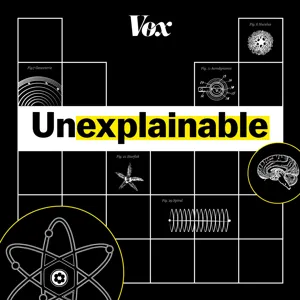Podcast Summary
Exploring Solutions for a More Resilient Electrical Grid: Despite vulnerabilities to extreme weather and insufficient reserve power, researchers are investigating ways to improve the electrical grid's ability to adapt and store large-scale energy through advanced battery technology.
Our electrical grid infrastructure is vulnerable to extreme weather events and lacks sufficient reserve power, leading to devastating blackouts with life-threatening consequences. The grid's inability to adapt to these challenges stems from the limitations of current battery technology in handling large-scale energy storage. Neil and the team are investigating potential solutions to this issue, exploring how to effectively "capture lightning in a bottle" and ensure a more resilient and reliable electrical grid for the future. Meanwhile, companies like Mercury and Apple Card offer simplified financial solutions to help businesses thrive and grow.
Storing electricity's complexity: Researchers explore unconventional battery solutions to store large amounts of electricity in unique ways, addressing grid imbalances and extreme weather conditions.
Storing electricity is a complex challenge due to its nature as a movement of electrons rather than a substance. Electricity cannot be held directly like a wave in a stadium or a wave in the ocean, but we can transform it into other forms such as heat or chemical energy to store it. Our power grid is designed to deliver electricity in real-time, and even small imbalances can cause significant issues, especially during extreme weather conditions. To address this, researchers and engineers are exploring unconventional battery solutions that can store large amounts of energy in unique ways. This might involve building "weird batteries" that can hold onto electricity in new and innovative ways.
Exploring Alternatives to Batteries for Large-Scale Energy Storage: Due to limited resources and challenges in scaling up batteries, alternative methods like mountain or underground storage are being explored for large-scale energy storage to meet grid demands, addressing concerns over availability and cost of special metals used in batteries and the plateauing advancement of chemical battery technologies.
While batteries, like lithium-ion, are effective at storing electricity, their limited resources and the challenge of scaling them up for the grid make it necessary to explore alternative methods for large-scale energy storage. The discussion highlighted the issues with the availability and cost of special metals used in batteries, and the plateauing advancement of chemical battery technologies. The focus should shift towards more creative solutions, such as utilizing mountains or underground storage, to meet the energy storage demands for the grid.
Transformative power of running for women and pumped hydro storage as a game-changer in electricity storage: Running empowers women, while pumped hydro storage offers a creative and effective solution to the challenge of storing excess electricity efficiently.
Running can be a transformative experience for women, helping them regain control and proving self-doubts wrong. Meanwhile, in the realm of energy production, a creative solution to storing excess electricity has emerged: pumped hydro storage, as exemplified by Northfield Mountain in Massachusetts. This method involves pumping water uphill to a reservoir during periods of excess electricity generation, and releasing it back down to generate electricity when demand is high. Essentially, this reservoir functions as a massive battery, providing a crucial solution to the challenge of storing electricity efficiently.
Massachusetts power grid stabilizer: Northfield Mountain, a pumped hydro storage facility, stores excess renewable energy and releases it during peak demand, preventing blackouts in Massachusetts.
Northfield Mountain, a pumped hydro storage facility in Massachusetts, plays a crucial role in stabilizing the New England power grid by storing excess electricity, primarily from renewable sources, and releasing it during peak demand periods. The facility, which has been in operation since the 1960s, stores electricity by pumping water uphill and releasing it to generate power when needed. With a capacity of 292 megawatts per unit, Northfield Mountain can provide electricity for essential systems during grid emergencies and help prevent blackouts. While pumped hydro storage is an effective solution for energy storage, it requires specific landscapes with mountains and water sources for successful implementation.
Alternative Energy Storage Solutions: Gravity and Thermal: Gravity and thermal storage are alternative energy solutions that don't require water or specific geography like pumped hydro. They use concrete blocks or heated materials to store energy, but their production processes are less efficient than some battery solutions.
There are alternative energy storage solutions to traditional pumped hydro that can be deployed anywhere, without geographical constraints or the need for water. Gravity storage, specifically companies like Energy Vault, use massive cranes and concrete blocks to store energy. When renewable energy is abundant, the crane lifts the blocks and stacks them around the tower. To generate electricity, the blocks are dropped, allowing gravity to spin a generator. Gravity storage operates on the same principle as pumped hydro but does not require water or specific geography. However, the production of concrete blocks for this system is energy-intensive, making it less efficient than some other battery solutions. Thermal storage, another alternative, involves using renewable energy to heat materials like rocks or salt, which is then held in insulation until needed. Both gravity and thermal storage require building new infrastructure but can offer energy storage solutions for areas without access to traditional pumped hydro or water resources.
Exploring thermal energy storage systems for power grids: Thermal energy storage systems can be integrated into coal or natural gas power plants to store heat during off-peak hours and generate electricity when needed, enabling the reversal of power flow and supporting a reliable, affordable, and sustainable electric future.
The energy sector is exploring various innovative solutions to store energy and make power grids more efficient and sustainable. One such solution is the use of thermal energy storage systems, which can be integrated into existing coal or natural gas power plants to store heat during off-peak hours and generate electricity when needed. This approach, often referred to as a "heat battery," allows for the reversal of the traditional power flow, enabling electricity to be sent into the power plant to heat up the storage system, and then released to produce electricity when required. While no single technology can completely future-proof our power grid, a combination of solutions, including thermal energy storage, pumped hydro, solar power, and others, will be necessary to address the unique energy needs of different regions. The development of better energy storage solutions is crucial to support the push towards electrifying everything and ensuring a reliable, affordable, and sustainable electric future.
The need for sustainable electricity in a changing climate: As climate change intensifies, finding eco-friendly ways to generate and store electricity becomes essential to prevent power outages and reduce reliance on fossil fuels.
As the effects of climate change become more extreme, our need for heating and cooling will increase, making it crucial to find sustainable ways to generate and store electricity. Relying on fossil fuels will only worsen the problem and lead to power outages. On a different note, the new docuseries "Running Socks" explores why women runners continue to push themselves despite hating the experience at times. It's about regaining control and defying self-doubt. Both climate change and running require determination and resilience, and finding solutions for each issue will require dedication and innovation. Stay tuned for more insights on these topics and others.






